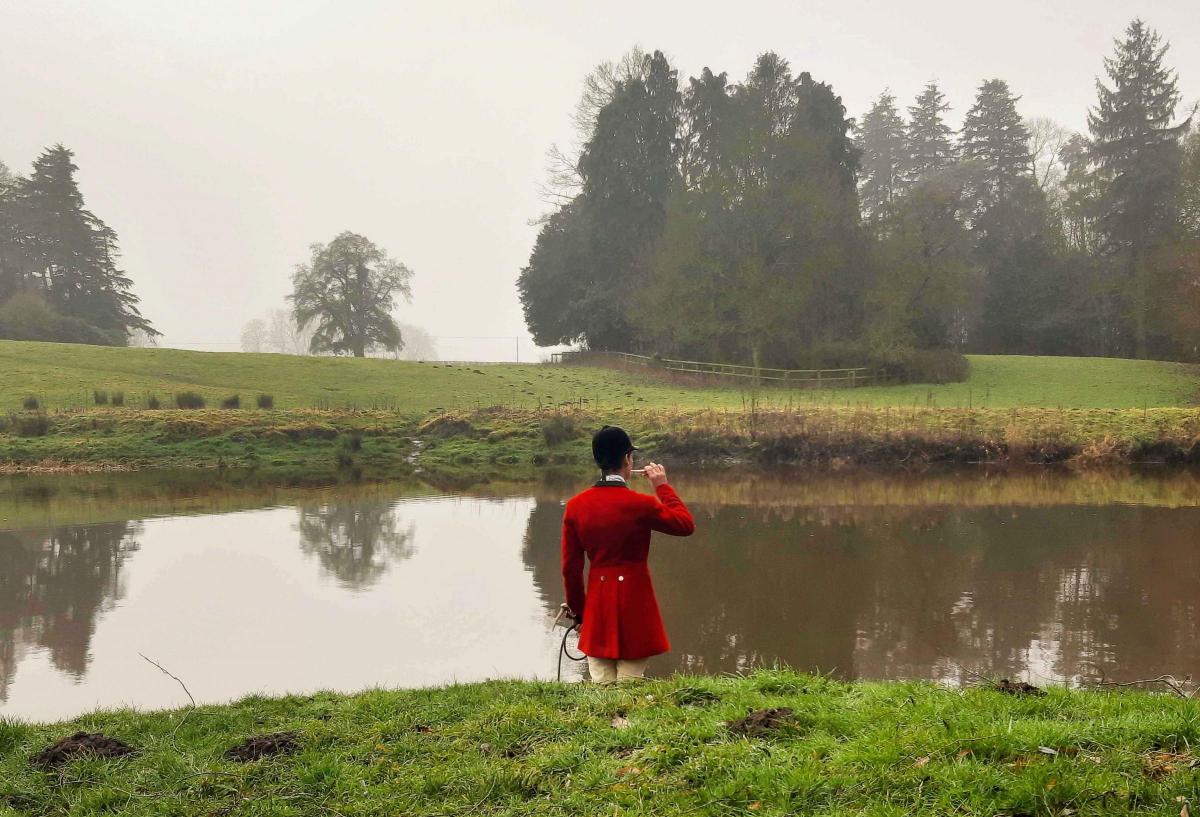FOR an hour on February 4, 1869, the York and Ainsty Hunt had enjoyed a “capital chase” across the fields of North Yorkshire to the south of the River Ure in pursuit of a fox.
It was a cunning animal. Twice before the hunt had chased it, and twice before it had eluded them by plunging into the fast-flowing River Ure near Ripon and swimming across.
And so it did 150 years ago this week, when the Ure was running high, swollen by snowmelt. The fox reached the southern bank opposite Newby Hall, the home then of Lady Mary Vyner and now a popular stately home with the additional lure of a miniature railway running along the riverbank.
In it leapt, followed by the hounds.
Seeing that the river was 50 yards wide and in full spate, the huntsmen, led by the master, Sir Charles Slingsby, dashed along the bank to Newby Hall’s private ferry, a flat, wooden platform, 30ft long, which was winched back and forth across the river by a chain.
Sir Charles, 45, and his favourite hunter, Saltfish, scrambled on to the platform first, followed by a veritable who’s who of North Yorkshire huntsmen, until there were 13 people and 11 horses crammed on. The rocking barge was fatally overloaded as Sir Charles seized the chain and Captain Clare Vyner, of Newby Hall, pushed it away from the bank into the churning current.
Halfway across, Saltfish became agitated. It kicked Sir George Wombwell’s mount, which kicked back, causing Saltfish to jump overboard. As Sir Charles was holding the reins tightly, he was dragged over, tipping the barge.
It rose up out of the water at a steep angle, causing the horses to slither downwards, which magnified the rock so that everyone – man and horse – was tossed into the icy stream. The boat then flipped over and came crashing down on the heads of those struggling for their lives.
It was, said the Darlington & Stockton Times, “a dreadful scene”.
There was a chaos of flailing arms and kicking hooves as men and horses fought to keep their heads above water, while saturated hunting pinks and heavy leather boots conspired to drag the humans downwards.
Those on the banks tied their riding whips together and threw them for their drowning fellows to grasp hold of; the bravest tossed off their greatcoats and plunged in to help.
Sir Charles was seen to haul Sir George onto the underside of the up-turned platform – but it flipped over once more, plunging them back into the water, and Sir Charles was swept away with loyal Saltfish, which he had owned for 15 years, apparently recognising his red riding jacket and going after him.
Non-swimmer Sir George, who had survived the Charge of the Light Brigade in 1854 when his horse was shot beneath him, had another lucky escape: Capt Vyner hauled him back onto the barge unconscious.
Others were not so fortunate. Nine of the 11 horses drowned (Saltfish somehow scrabbled its way out on the Newby side) as did six of the 13 humans.
Sir Charles, the 10th baronet of Scriven Park, Knaresborough, was the most well known fatality, and there was surprise that Edward Lloyd, of Lingcroft Lodge near York, hadn’t made it as he had been a champion swimmer at Eton. Edmund Robinson of Thorpe Green, in Surrey, also failed to make it across, as did William Orvis, the kennel huntsman.
Christopher Warriner, the Newby Hall gardener and his son, James, who had been manning the ferry, also perished.
Sir Charles, a hugely popular hunting figure, was buried a week later in Knaresborough to extraordinary scenes. “A monster special train” from York brought “1,000 of the leading citizens of Old Ebor” to pay their last respects, and the D&S Times estimated that the route from Scriven Hall to the church was lined by more than 30,000 spectators.

IN REMEMBRANCE: About 200 people attended a memorial service this week in the gardens of Newby Hall
In the grounds of Newby Hall an elegant stone memorial was erected to the tragedy, and around it on Tuesday, about 200 people, including descendants of those who perished 150 years ago, attended a service, conducted by Canon Richard Cooper, chaplain to the Queen. It finished with Sam Townend, from the York and Ainsty Hunt finished the proceedings by Blowing for Home – the traditional call for the end of a hunt.










Comments: Our rules
We want our comments to be a lively and valuable part of our community - a place where readers can debate and engage with the most important local issues. The ability to comment on our stories is a privilege, not a right, however, and that privilege may be withdrawn if it is abused or misused.
Please report any comments that break our rules.
Read the rules hereLast Updated:
Report this comment Cancel